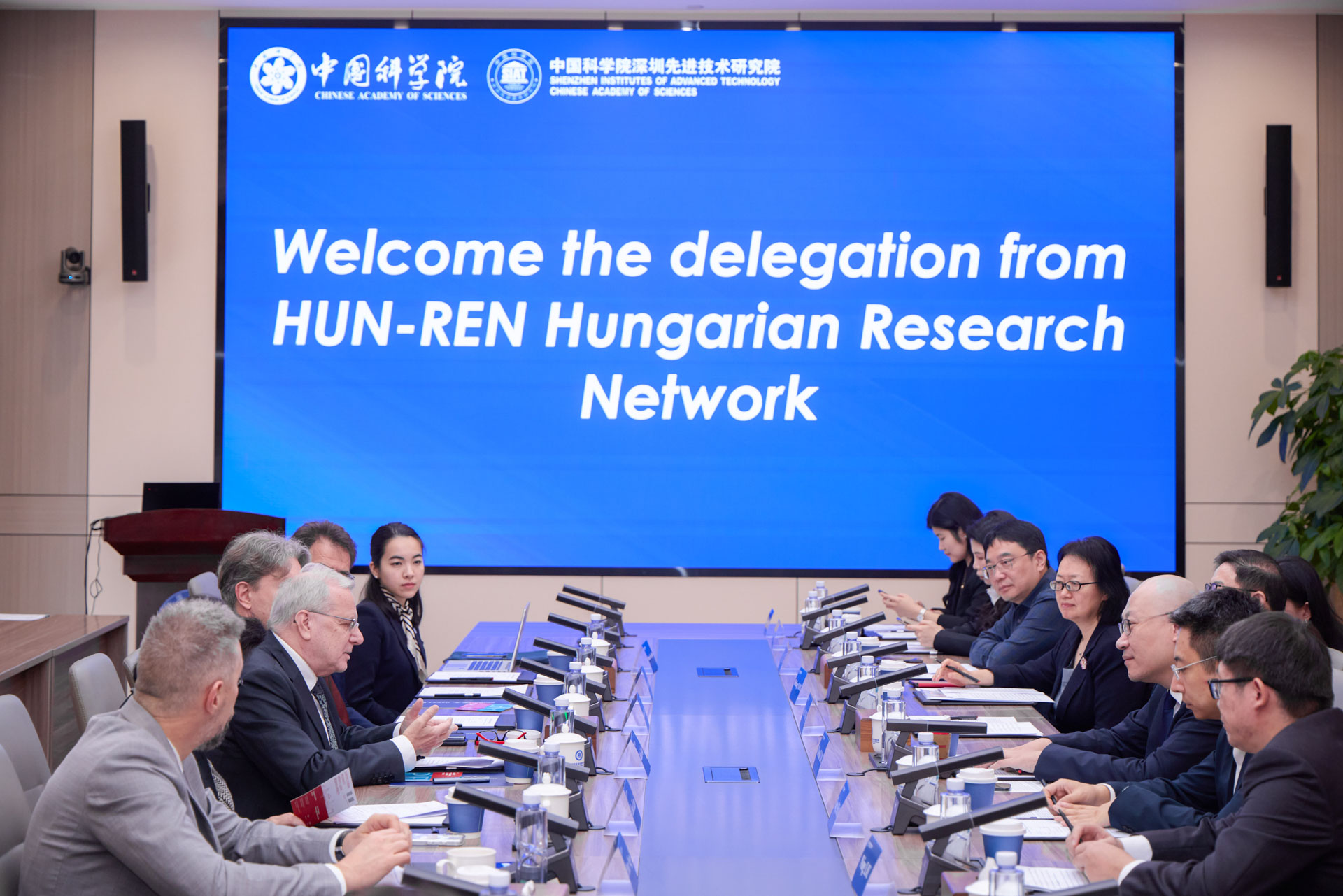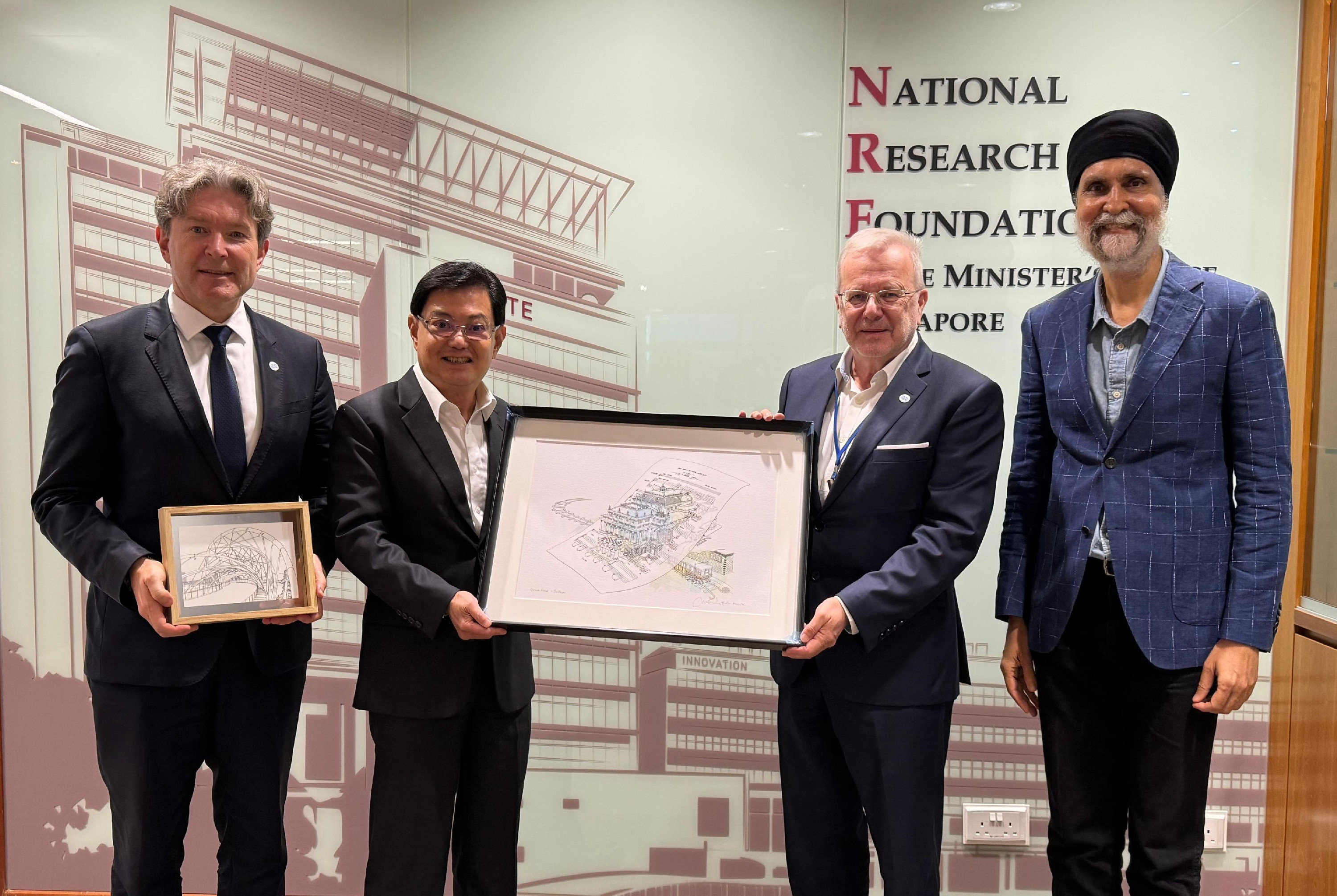"We’ve Completed a Significant Part of the Work Required to Establish the New Organisation"
At the HUN-REN Hungarian Research Network Symposium on 10 April, Beáta Sótyné Hoffer, Deputy CEO for Operations, and Márk Gergics, Head of the Transformation Project Office, presented the milestones achieved in the renewal of the research network, the results of the thematic sub-programmes, and the next steps.
“This was our big sprint – we’ve completed a major project phase. We’ve carried out a significant part of the tasks required to establish the new organisation across all sub-programmes, but we still face the challenge of translating concepts that so far exist only on paper into daily practice,” began Beáta Sótyné Hoffer, Deputy CEO for Operations, in the joint presentation.

Photo: DKP Visual Kft.
The diagram showing the planned timeline of the transformation recalled the key phases in the renewal of the research network – the initial planning phase was followed by a stabilisation period, which has now come to an end.
The significance of the stabilisation project phase
“Over the past four months, the main task of the Transformation Project Office has been to review the operational and research management processes, as well as the research infrastructure, that are critical for the transition defined in the HUN-REN Act. The aim was to ensure that these processes would continue to function smoothly following the transformation into a separate legal entity, and that the institutions within the network would be able to carry out their core tasks without interruption throughout the transition period,” said Márk Gergics, Head of the Transformation Project Office, summarising the essence of the stabilisation phase.

Photo: DKP Visual Kft.
Another important achievement in recent months has been that the staff of the thematic sub-programmes, coordinated by the Transformation Project Office, have begun designing the organisational and operational framework that best fits the vision of HUN-REN’s leadership. The aim is for the Hungarian Research Network to operate in the long term as a competitive, innovative, and sustainable institution with a prominent role in international scientific life.
The most significant outcome of the stabilisation period is that HUN-REN now has a transition roadmap in place for all critical areas of operations and research management.
Results of the sub-programmes’ work
A number of tasks related to the renewal of the organisational and operational model have already been completed. A new governance model has been developed, together with a draft public function financing agreement. In parallel, a new organisational chart has been prepared, including detailed descriptions of functions, and the Deed of Foundation as well as the Organisational and Operational Regulations have been finalised — both for the network as a whole and for the individual research institutions.
A set of network-level indicators has been defined to measure core activities – a notable step forward in the transition to performance-based operations. However, work continues: the detailed development of the new indicator system is under way, including the definition of individual indicators, baseline values, targets, measurement timelines, data sources, and monitoring principles. In parallel, the process of defining indicators and funding is taking place across the three main scientific fields.
Experts within the sub-programmes are analysing the grant data and processes of the HUN-REN research institutes, identifying bottlenecks and working on possible solutions. It has also been reassuringly confirmed that the conditions for participation in international grant schemes are being met. Another goal is to establish the guiding principles of an effective grant strategy.
Several tasks under the Innovation sub-programme have also been completed: HUN-REN’s patent register has been finalised, together with the related regulatory framework. Preparations are under way for the establishment of the Technology Transfer Company (TTC), and ideas are being gathered on how to optimise the operation of the innovation manager network.
The Research Career Model sub-programme, established later than the others, is working on the development of researcher job families and levels, with the aim of creating a clear and transparent career path for researchers within HUN-REN. The design of a tenure system is also in the preparatory phase, as are the modernisation of the remuneration system and the definition of guiding principles for individual performance assessment.
Within the Financial Optimisation and Asset Management sub-programmes, several key tasks have already been completed. The processes related to the closure and opening of institutions were successfully carried out, and the Ecostat system has been standardised to serve as a single platform for future operations.
Inventory tasks related to the closure of institutions are under way, and a detailed plan for the transfer of assets from the Hungarian Academy of Sciences (HAS) is being prepared. In addition, a new facilities management service concept is being developed, and the conceptual design of the management information system is also in progress.
The Human Resources sub-programme is working on a salary development plan and ensuring the smooth transition of payroll and employment processes once the change in legal status becomes possible. Staff have consolidated job categories across the network. In addition, a performance appraisal and target-setting framework is being developed as the basis for the organisation’s future human resources strategy.
The IT sub-programme has established a network-wide extranet platform and reviewed compliance with the NIS2 Cybersecurity Directive. Ongoing tasks include the preparation of the Service Centre concept and the review of licence agreements.
In the Communications and Change Management sub-programme, the internal and external communication of changes remains an ongoing task. The extranet has been launched and is offering an increasingly wide range of content to inform all staff across the network, with editorial management handled by the sub-programme’s co-leaders. A renewed HUN-REN brand strategy has been developed, and the implementation of the change management concept is under way. This includes the use of focus groups to support the structural transition within the network and to further develop the organisational culture.
The first milestone has been successfully achieved – the focus now shifts to stable implementation and the achievement of long-term excellence. The comprehensive renewal of the organisation and its operations is expected to be fully completed by the end of 2027.

